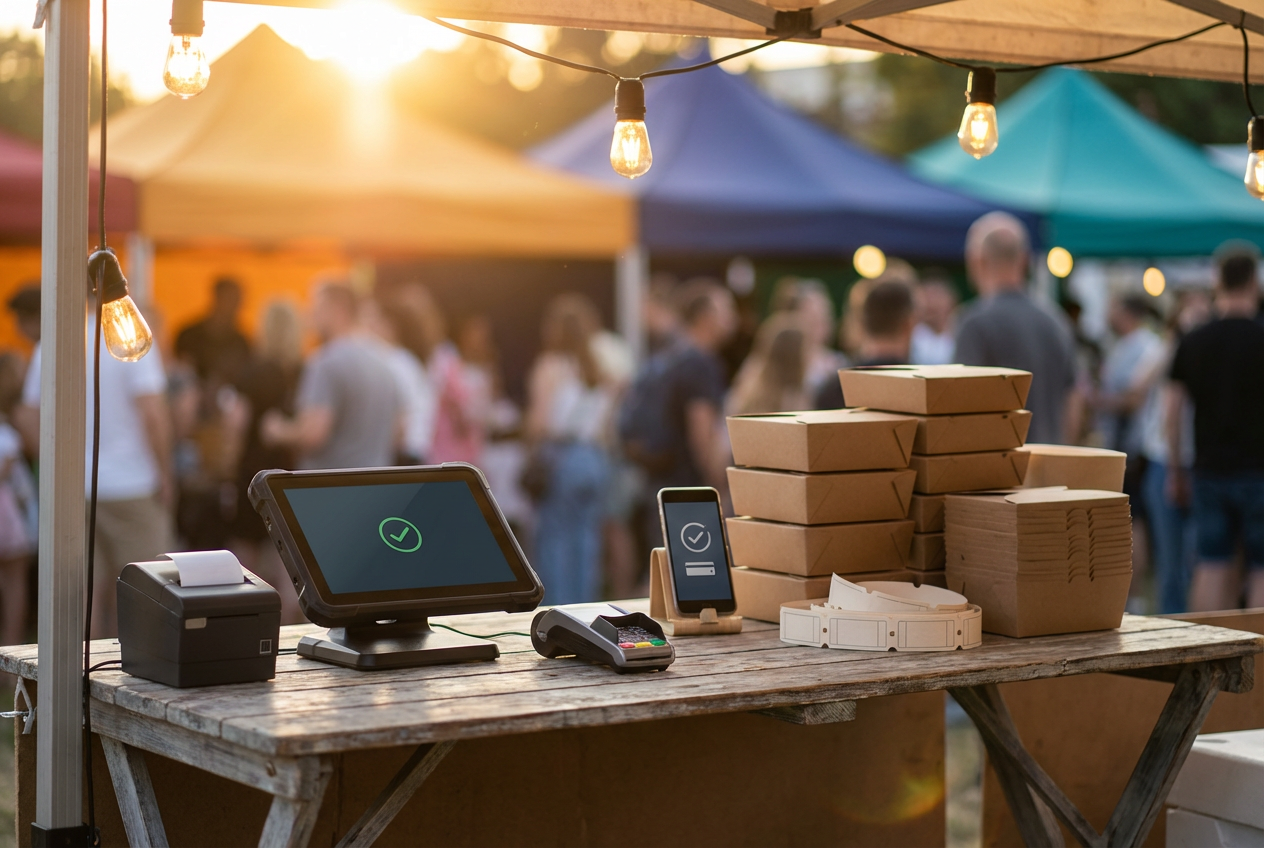Looking to stay one step ahead in Thai fashion retail? This ConnectPOS guide puts the spotlight on real headaches that brands face before investing in an apparel pos thailand solution. Fashion owners want to move fast, keep shoppers happy, and handle those endless size and style variants without losing their cool. If that sounds familiar, keep reading, ‘boring’ isn’t on the menu.
Highlights
- Key considerations: Look for a system that supports local payments, tracks style-level trends, handles complex product grids, and stays reliable across multiple channels, even offline.
- Quick Checklist Before You Buy: Make sure your POS can manage variants, follow Thai payment and tax rules, stay connected during outages, and scale with your business, without extra hassle.
Role of Apparel POS Systems in Thailand
What Is an Apparel POS System?
An apparel POS system is the ‘brain’ behind every clothing store, not just a glorified cash register. A true apparel POS tracks sales, checks stock, manages returns, and spots what’s trending before the next TikTok craze hits. Thai fashion brands run fast. The right POS keeps every size, style, and color ready to go without frantic paper notes or last-minute WhatsApp checks.
Choosing the right apparel POS solution in Thailand can significantly enhance how smoothly you run your store and keep you ahead of the competition.
McKinsey’s regional research shows that omnichannel fashion shoppers purchase 1.7 times more often than offline buyers and spend 34% more per transaction, so the platform you pick directly affects revenue upside.
Fashion Retail in Thailand Is Complex
Fashion retail isn’t like other industries. Every launch brings new SKUs, seasonal changes, and surprise bestsellers. Stock management gets messy. Trends shift overnight. If you blink, those must-have jeans are gone, and your customer is already buying somewhere else. No wonder so many owners get lost in the flood of numbers.
NielsenIQ reports that Thai shoppers increased their online fashion spend by 17% last year while cutting offline spend by 9%, a swing that magnifies inventory headaches for stores without real-time data.
The Role of POS in Connecting Online and Offline Sales
Now, POS systems have become the heart of retail in Thailand. They connect in-store sales to your webstore, sync every SKU, and let you run loyalty programs that actually get noticed. Suddenly, staff can serve both walk-ins and online shoppers without missing a beat. Try doing that with an outdated till and watch the lines grow and the reviews drop.
Statista projects that Thailand’s digital-payment transaction value will climb past US$83 billion in 2025, more than 20% higher than the previous year, so your POS must process bigger volumes without hiccups.
Thailand’s payment habits are a unique phenomenon. It’s not just cash and card anymore. Think PromptPay, QR codes, Rabbit LINE Pay, and international cards from tourists. The POS needs to handle them all, or you’re losing sales right at the counter.
Bloomberg coverage notes that PromptPay’s rise could save Thai banks about US$2 billion in fees over ten years, evidence of how deeply QR payments have entrenched themselves in everyday transactions.
►►► Optimal solution set for businesses: Multi store POS, Next-gen POS, Inventory Management Software (MSI), Self Service, Automation, Backorders
How Local Trends Are Shaping Fashion Retail
Ask any store owner in Bangkok. Cash isn’t king anymore. Thai shoppers want to scan, tap, or swipe their way through checkout. QR payments and digital wallets like PromptPay are now standard, especially for young buyers. Ignore this trend, and your checkout will feel ‘ancient’ before the season is even over.
Forbes points out that digital wallets already drive roughly 30% of global in-store spending and more than half of global e-commerce payments, while TechCrunch values Southeast Asia’s social-commerce market at over US$13 billion, showing why seamless mobile checkout and live-sale integrations matter.
Tourists flood Thai malls all year, bringing every card brand you can think of. If your POS can’t handle multi-currency payments and global card schemes, expect frustration. Brands are waking up to this fact fast. Nobody wants to tell a Russian tourist that their card won’t work or lose a sale because a Chinese visitor can’t use Alipay.
Fashion in Thailand is ‘everywhere at once.’ Shoppers want to browse online, check in-store, and grab the last pair of sandals at a weekend market. Order fulfillment powered by real-time inventory sync is the magic ingredient. If your online and offline stock don’t match, overselling happens, refunds multiply, and reputation tanks.
Thailand also has its own retail rules: tax settings, e-invoices, language requirements. Get it wrong, and you’ll find out just how fast a tax audit can show up. The best POS systems for retail don’t just ‘translate’. They’re built for these quirks from the start.
Key Considerations When Choosing an Apparel POS Thailand
Choosing the right system can make or break your store. Before making a decision, weigh these factors carefully to avoid future regret.
Support for Local Payments
Today’s shoppers expect speed and options. ConnectPOS, for example, includes QR scanning, PromptPay, Rabbit LINE Pay, and handles foreign cards right out of the box. Don’t settle for any POS that can’t process what your customers want.
Product Matrix Management
Anyone who’s worked in a fashion stockroom knows the ‘headache’ of SKUs. A single style can explode into dozens of options once colors and sizes are counted. You want a POS that manages these grids painlessly. No more guessing which navy, size S, just sold. A custom POS lets you tailor these features to match your inventory complexity.
Style-Level and Seasonal Analytics
It’s not about flooding racks with new arrivals. A smart apparel POS Thailand highlights which colors or cuts are taking off and which need to go on sale. That way, you can make the call before markdowns eat your margin.
Omnichannel and Multi-Location Management
Thai retailers rarely stick to one storefront. Whether you’re testing a pop-up in CentralWorld or moving into Chiang Mai, your POS should sync stock, prices, and promos everywhere. No more duplicate entries or mystery stockouts. ConnectPOS keeps every branch and channel connected in real time.
Cloud and Offline Reliability
WiFi problems shouldn’t kill your business. The right system runs offline, stores every transaction, and syncs it all when the network returns. That means no lost sales, ever.
Local Integrations
Thailand’s hardware market is crowded. You need a system that works with barcode scanners, receipt printers, and cash drawers you already own. No need for pricey upgrades or support calls from overseas.
CRM and Loyalty
Fashion thrives on returning customers. Build profiles, send targeted SMS, and reward shoppers based on what they actually buy. Look for CRM POS that tag regulars and help bring them back. No ‘cookie-cutter’ loyalty cards.
Reporting and Analytics
No more scrolling through endless Excel files. The best apparel POS Thailand hands you clear dashboards: which lines are hot, who’s selling best, and what to reorder. Exports are quick, perfect for your bookkeeper or accountant.
Scalability
You may start small, but fashion retailers in Thailand dream big. Your POS must grow with you: new stores, new staff, new payment channels. A flexible POS grows without the headaches, so you don’t have to rip out systems every time you expand.
Transparent Pricing
Many POS vendors lure you in with low sticker prices, then hit you with hidden charges. Look out for add-ons, forced hardware, or processing upcharges. The best providers spell out every fee so you can plan for growth, not nasty surprises.
Security and Compliance
Retailers manage sensitive data: card numbers, purchase history, and customer info. Pick a POS that protects it all. Look for role-based permissions and compliance with local and global rules.
Thai Language Support and Local Onboarding
No store owner wants to wait for tech support from another time zone. The right system should support Thai language, quick onboarding, and real help when you need it most.
Common Pitfalls to Avoid with Apparel POS in Thailand
Retailers in Thailand often fall into common traps when picking a POS system. These mistakes can quietly drain profits and frustrate both staff and shoppers.
- Picking a global POS that skips Thai payment options can cause failed checkouts and unhappy customers.
- Ignoring the complexity of fashion SKUs: color, size, style, leads to stockouts or messy overstocking.
- Skipping real-time sync for omnichannel selling puts you at risk of overselling or refund hassles.
- Not planning for long-term fees like add-ons or support, can blow your tech budget fast.
- Overlooking Thai-language support leaves staff stuck during breakdowns or busy sales rushes.
Quick Checklist Before You Buy
Ready to shop for a new Apparel POS system in Thailand? Keep this short list handy before you sign anything.
- Can it handle color, size, and style grids without clunky workarounds?
- Does it support all major Thai payment methods, plus tax and e-invoice rules?
- Is inventory synced instantly between online and offline?
- Will it work during internet blackouts? Does it recover data automatically?
- Can you add stores, channels, and new features without starting over?
A system that ticks every box is worth its weight in gold, especially during the next big shopping rush.
ConnectPOS – Apparel POS for Thai Fashion Retail
ConnectPOS is a cloud-based POS system trusted by over 12,000 retailers worldwide, including Thailand. It’s built for fast-moving industries like fashion, where split-second decisions, constant product updates, and shifting customer expectations are always in play.
Whether you’re running a boutique in Siam Paragon or selling across branches in different provinces, ConnectPOS adapts to your retail setup. No matter how complex.
Key features that fashion stores in Thailand rely on:
- Matrix Inventory Management: Track product variants like size, color, and style without juggling spreadsheets.
- Real-Time Omnichannel Sync: Inventory, orders, promotions, and customer data stay updated across webstores, marketplaces, and physical shops.
- Thai Payment Integration: Works with PromptPay, Rabbit LINE Pay, Thai QR codes, and international card processors. No third-party tools needed.
- Multi-Store and Multi-Warehouse Support: Control stock and sales across all locations from one backend, even if stores run different prices or promos.
- Offline Mode That Actually Works: Keep selling even when the WiFi cuts out. Data syncs when you’re back online.
- Mobile POS for Floor Sales or Pop-Ups: Run transactions on the move, great for events, weekend markets, or just helping customers in-store.
- Loyalty and CRM Built In: Capture customer data, track buying habits, and launch targeted rewards or re-engagement offers.
- Visual Reports for Smarter Buys: Get instant sales trends by product line, style, or even employee. Make data-backed decisions before the next season rolls in.
One example is Departure Thailand, a stylish luggage retailer based in Bangkok. They started online but expanded into a physical store in the trendy Thong Lor area. With ConnectPOS, they synced inventory, tax rates, and product data instantly across both channels. Their team now uses familiar hardware and local payment options without needing separate systems or manual updates.
The result? 20% higher customer satisfaction, 15% increase in sales conversion, 50% lower cost to serve.
FAQs: Apparel POS Thailand
1. Do I need separate systems for online and physical stores?
No. Smart POS solutions handle both in one place, so inventory, promos, and customer data always match.
2. Can a POS help track which sizes or styles sell better?
Definitely. The best POS platforms highlight trends and slow sellers, letting you restock or mark down with confidence.
3. What’s the biggest mistake fashion stores make with POS?
Overlooking local payment habits, SKU complexity, and the need for real-time sync. One slip and shoppers head elsewhere.
Final Thoughts
Fashion retail in Thailand is fast, competitive, and driven by shopper demand. Surviving, or even thriving, takes more than a basic register or one-size-fits-all software. You need an apparel pos thailand system that’s ready for every curveball: QR codes, color grids, viral trends, and new store launches.
ConnectPOS checks all the boxes, from payments to pop-ups, and it’s trusted by stores where every second matters. If you want retail tech that won’t hold you back, reach out for a free demo and see how ConnectPOS fits your store. Ready for the next wave of Thai fashion retail? Contact us and leave those old POS headaches behind.
►►► Optimal solution set for businesses: Shopify POS, Magento POS, BigCommerce POS, WooCommerce POS, NetSuite POS, E-Commerce POS



